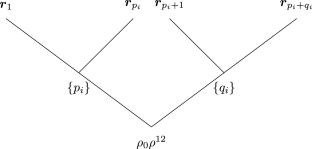核微小体系统的代数方法
IF 1.8
4区 物理与天体物理
Q2 PHYSICS, MULTIDISCIPLINARY
引用次数: 0
摘要
我们提出了一种构建少子体系统模型空间的代数方法。该方法适用于观测计算。该模型利用平移不变的谐振子基础。我们广泛使用对称群装置来计算分数母系系数。本文章由计算机程序翻译,如有差异,请以英文原文为准。


Algebraic Approach to the Nuclear Few-Body Systems
We present an algebraic approach for the construction of the model space for the few-body systems. The approach is suitable for the observable calculation. The model utilizes the translationally invariant harmonic oscillator basis. We extensively use the symmetric group apparatus for the fractional parentage coefficient calculation.
求助全文
通过发布文献求助,成功后即可免费获取论文全文。
去求助
来源期刊

Few-Body Systems
物理-物理:综合
CiteScore
2.90
自引率
18.80%
发文量
64
审稿时长
6-12 weeks
期刊介绍:
The journal Few-Body Systems presents original research work – experimental, theoretical and computational – investigating the behavior of any classical or quantum system consisting of a small number of well-defined constituent structures. The focus is on the research methods, properties, and results characteristic of few-body systems. Examples of few-body systems range from few-quark states, light nuclear and hadronic systems; few-electron atomic systems and small molecules; and specific systems in condensed matter and surface physics (such as quantum dots and highly correlated trapped systems), up to and including large-scale celestial structures.
Systems for which an equivalent one-body description is available or can be designed, and large systems for which specific many-body methods are needed are outside the scope of the journal.
The journal is devoted to the publication of all aspects of few-body systems research and applications. While concentrating on few-body systems well-suited to rigorous solutions, the journal also encourages interdisciplinary contributions that foster common approaches and insights, introduce and benchmark the use of novel tools (e.g. machine learning) and develop relevant applications (e.g. few-body aspects in quantum technologies).
 求助内容:
求助内容: 应助结果提醒方式:
应助结果提醒方式:


